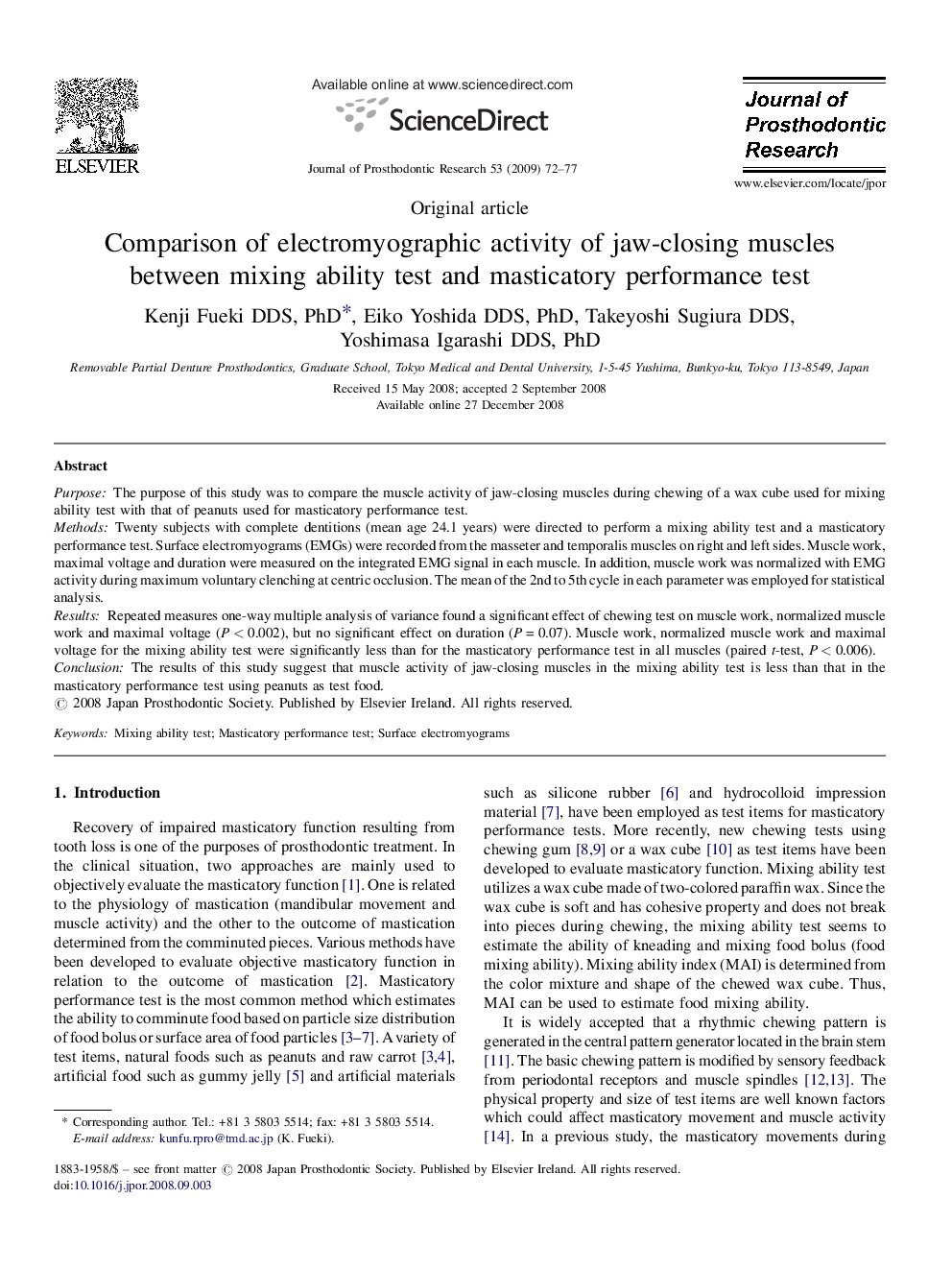| Article ID | Journal | Published Year | Pages | File Type |
|---|---|---|---|---|
| 3160787 | Journal of Prosthodontic Research | 2009 | 6 Pages |
PurposeThe purpose of this study was to compare the muscle activity of jaw-closing muscles during chewing of a wax cube used for mixing ability test with that of peanuts used for masticatory performance test.MethodsTwenty subjects with complete dentitions (mean age 24.1 years) were directed to perform a mixing ability test and a masticatory performance test. Surface electromyograms (EMGs) were recorded from the masseter and temporalis muscles on right and left sides. Muscle work, maximal voltage and duration were measured on the integrated EMG signal in each muscle. In addition, muscle work was normalized with EMG activity during maximum voluntary clenching at centric occlusion. The mean of the 2nd to 5th cycle in each parameter was employed for statistical analysis.ResultsRepeated measures one-way multiple analysis of variance found a significant effect of chewing test on muscle work, normalized muscle work and maximal voltage (P < 0.002), but no significant effect on duration (P = 0.07). Muscle work, normalized muscle work and maximal voltage for the mixing ability test were significantly less than for the masticatory performance test in all muscles (paired t-test, P < 0.006).ConclusionThe results of this study suggest that muscle activity of jaw-closing muscles in the mixing ability test is less than that in the masticatory performance test using peanuts as test food.
